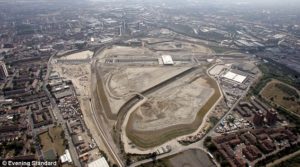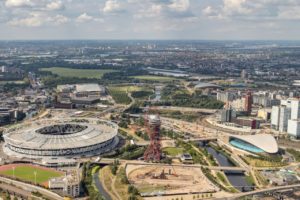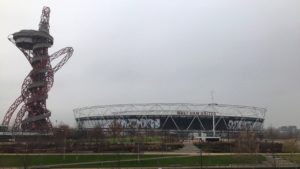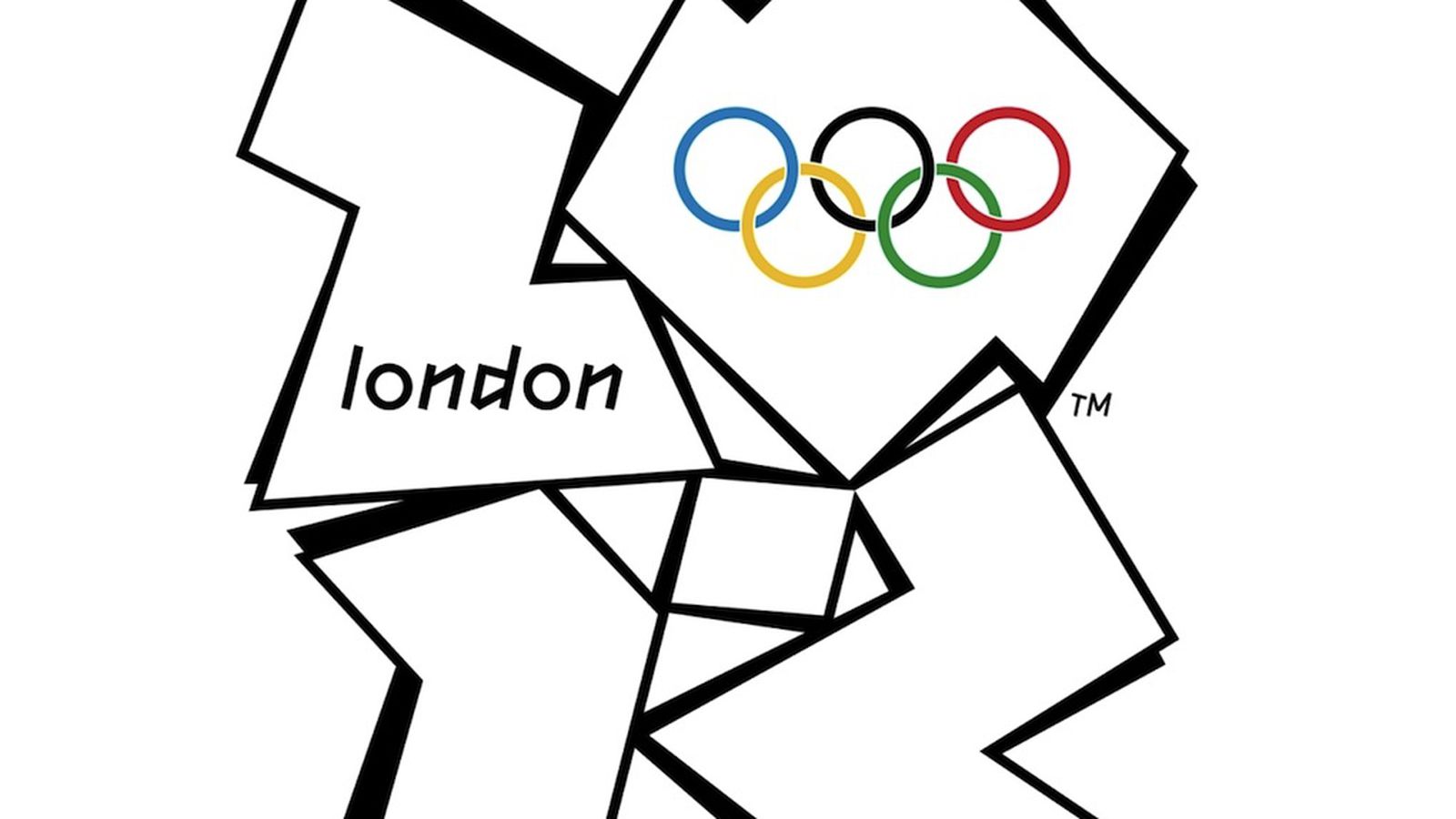When the area of Stratford is mentioned, what is the first thing that springs to mind? Westfield or Queen Elizabeth Olympic Park, right?
Well, go back 20 years and Stratford as a whole was very different. A few local sports centres stood, but derelict sites and vast marshlands that continued from Hackney Marshes took up a large portion of the now: ‘Stratford City’.
The older ‘Stratford Shopping Centre’ still sits opposite the new modern Westfield construction and it was the go-to in the area for all of your needs. The old architecture of the centre, now masked by an iridescent, eye-catching sculpture, perfectly captures the correlation between old and new. Perhaps the masking of the old, rather than the flaunting of the new?
However, you look at it; it’s clear to see the opportunity that this area within East London has been given in that time period since. An opportunity that has allowed it to transform into a popular, thriving area. A variety of new flat blocks, housing developments and shops have popped up and now plenty of recreational activities are available to partake in, making it a target destination for new buyers.
As it goes, much of the most deprived boroughs in East and South-East London received a huge regeneration boost in the journey taken towards the 2012 Olympic Games. Borough councils within the city improved a variety of aspects within Greenwich, Tower Hamlets, Hackney, Waltham Forest, Barking and Dagenham and Newham, with these six London boroughs set to host the majority of events for the country’s games.
Even with a start to redevelopment after the War, large portions of the East End still appeared exhausted and destitute in comparison to other parts of the capital city. The areas were among those with the largest unemployment levels in the whole country, as well as being troubled with serious crime problems, stemming from there being little local opportunities for people living in and around the surrounding areas.
A positive, however, due to the destruction from the war, was that East London had something unique that much of the rest of London lacked: large volumes of empty space and land. Such gave the opportunity for growth – as well as springing the local economy into life, with the hope that the area prospered from higher-quality housing and increased employment for locals.
The Olympic Project
Thus started the Olympic Dream for London. Taking it back to July 2005 now and a bid backed by former Olympian, Sebastian Coe and the former Mayor of London, Ken Livingstone meant London had just won the right to host the 2012 Summer Olympic and Paralympic Games, believing the capital to be the perfect host city. This winning bid made London the first city to host three of the modern Olympic Games, after previous successful ventures in 1908 and 1948.
The already popular, tourist destination was about to increase further in every aspect. Plans were being put in place, but the main discussion was for the development of the much-needed modern, multi-purpose arena and surrounding ‘sports village’ that would entertain the games itself, so the hunt was on for the spot.
The motto, ‘Inspire A Generation’, put a real priority on durability and longevity in regard to the improvement of the areas used and the opportunity it would bring for the people that lived and would continue to live in the area.
Along came Stratford; a perfect open space with the capabilities of becoming just that and from 2008 through to 2011, teams worked round the clock to construct what would become Queen Elizabeth Olympic Park. Upon completion, the site included a 66,000-seater athletics stadium, a velodrome and an aquatics centre, to name a few. For visiting fans, they would need sufficient transport links, therefore vast improvements were also put in place for surrounding ‘Transport for London’ systems.

It was in the immediate lead up to the games, however, that we would see the positive impact that the games would have on local boroughs. The Evening Standard reported of an economic boom in the three months leading to the Games which pushed the number of people working in Britain to a record 29.6 million. The Games created over 100,000 job opportunities, as well as a chance of investment for businesses and voluntary work.

Post-Olympics
Whilst this all seemed very positive, it was the aftermath that left many locals questioning the integrity of what they had been told. Of course, the popularity of the Games themselves would mean during the fortnight-long Olympics and preparation period plenty of opportunity would arise.
However, as the games finished, it was clear to see that many people were no longer needed despite promises. While 20,000 post-Olympics jobs were pledged to people of the communities surrounding The Olympic Park, only 9,700 eventually did.
The unemployment rate, for instance, still to this day remains one of the highest in places such as Bow and Bethnal Green, after many had difficulties finding work post-Games. In 2012, overall long-term unemployment rose to 26% despite the prior job boom, whilst at the same time the long-term youth unemployment rate rose to 55%.
Undeniably, it can be hard to solely blame this on the aftermath of the Olympic Games, as historically these areas have always struggled economically. However, questions must be asked regarding the potential false promises that were made by many institutions involving a rise in employment that would follow through long after the Games.
Today
Queen Elizabeth Olympic Park does still serve the local area and the stats don’t reveal all about the current climate surrounding the park.
The main stadium, now known as the London Stadium, serves as West Ham United’s home ground and the Copper Box Arena hosts London Lions’ basketball games. Lee Valley is used by local universities as sporting arenas for hockey and tennis, and the park as a whole is adored by both locals and tourists for nature walks and bike rides.

All in all, the success of London’s Olympic journey has impacted the area massively, regardless of the numerical opinion of columnists. The improvements in East London that turned neglected areas, that were still suffering from the War, into interesting, unique places was a huge long-term positive.
Despite not committing to every possible pledge, from a historic viewpoint London 2012 can be remembered as a time where Britons came together with the best interests of its people and an Olympics that gave a small suburb of East London a name for itself.
Featured Image Credit – ‘London 2012 Olympic Logo’ (The Verge – 2012)




